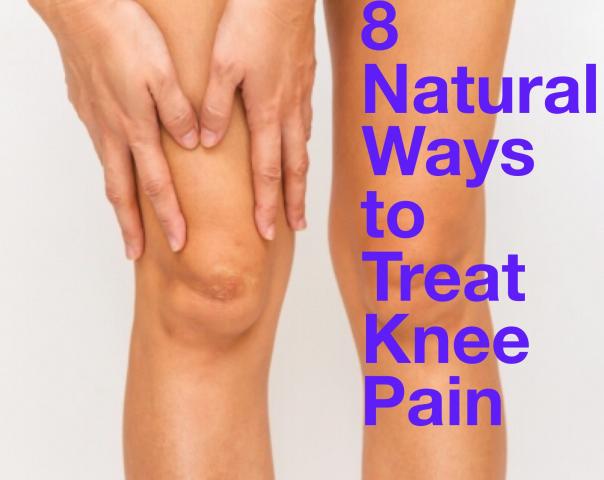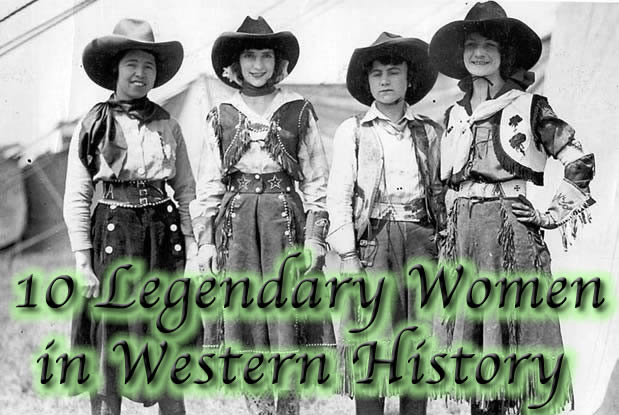10 Tips to Improve Your Posture
 Now more than ever, we are seeing just how important it is to have good posture. What your mother might have told you long ago may save you a world of trouble in your future. What is proper posture? The short answer is that good posture consists of proper body alignment, balance, and maintaining alignment as you walk, stand, sit, sleep, bend, or other such movement.
Now more than ever, we are seeing just how important it is to have good posture. What your mother might have told you long ago may save you a world of trouble in your future. What is proper posture? The short answer is that good posture consists of proper body alignment, balance, and maintaining alignment as you walk, stand, sit, sleep, bend, or other such movement.
Without the use of good posture in our lives, there are a multitude of problems you might face. Poor posture can lead to breathing problems, musculoskeletal issues, difficulty walking/issues with gait, joint pain, and various other conditions that can lead to physical injury or chronic pain. They may even be causing you pain and discomfort already. Good posture not only plays a physical role in our bodies but also a mental and biological role. Studies have concluded that good posture is related to an elevated mood, and creates a chemical reaction in our bodies. Posture has also been linked to changes in hormone levels. Some studies have shown posture to have an effect on cortisol and testosterone levels in our bodies. If your posture is misaligned, it will create misalignment in the joints. This leads to pain, swelling, and inflammation in those areas, which can not only make walking or sitting painful, but can also lead to debilitation. So how do you prevent these issues or relieve the pain of existing conditions? The idea is to practice balance and alignment, and there are various ways to improve these factors.

 These days, every runner seems to be talking about High-Intensity Interval Training (HIIT), and the reason why is important. HIIT may be just what you’re looking for to increase the effectiveness of your runs and other exercises. What makes High-Intensity Interval Training so special? The benefits seem to keep piling up, but first, let’s talk a little about what HIIT really is.
These days, every runner seems to be talking about High-Intensity Interval Training (HIIT), and the reason why is important. HIIT may be just what you’re looking for to increase the effectiveness of your runs and other exercises. What makes High-Intensity Interval Training so special? The benefits seem to keep piling up, but first, let’s talk a little about what HIIT really is. There are several natural, effective, and credible treatment options that are known to help with knee injuries or conditions and eventually reduce the amount of pain you experience in your knee. Before you begin any treatment options, it is advisable to speak with your doctor about the pain you experience in the knee and receive a proper diagnosis. Thoroughly explain your symptoms with your doctor; this will help you pinpoint the right types of treatment options for your pain. Most natural treatment options are safe enough to try out and will typically treat a majority of painful symptoms in the knees. In this article, we will discuss safe, natural, and effective treatments for your knee pain.
There are several natural, effective, and credible treatment options that are known to help with knee injuries or conditions and eventually reduce the amount of pain you experience in your knee. Before you begin any treatment options, it is advisable to speak with your doctor about the pain you experience in the knee and receive a proper diagnosis. Thoroughly explain your symptoms with your doctor; this will help you pinpoint the right types of treatment options for your pain. Most natural treatment options are safe enough to try out and will typically treat a majority of painful symptoms in the knees. In this article, we will discuss safe, natural, and effective treatments for your knee pain. Training for longer runs like marathons requires dedication and preparation. This includes starting to run longer distances than you normally do. If you are preparing for a 10k or a 15k, but you're used to running only 2-3 miles every day, it’s time to start preparing yourself for these longer distances. For beginning runners, or those who have only been running a few miles at a time, longer distances may seem like a scary thing, but they don’t have to be. Even if you are not preparing for a marathon, longer distances can have great improvements on your health, and also improve your time for your shorter runs. Longer runs will help build the stamina that you need, and help you understand what your body will require if you decide to go for that Ultramarathon one day. The longer the run, the more opportunity your body has to break down fat, improve healthy circulation and blood pressure, and increase lung capacity. There are, however, a few things you need to know before you start this process, and we’ve scoped out a few of the basic elements you’ll need to familiarize yourself with for running longer distances.
Training for longer runs like marathons requires dedication and preparation. This includes starting to run longer distances than you normally do. If you are preparing for a 10k or a 15k, but you're used to running only 2-3 miles every day, it’s time to start preparing yourself for these longer distances. For beginning runners, or those who have only been running a few miles at a time, longer distances may seem like a scary thing, but they don’t have to be. Even if you are not preparing for a marathon, longer distances can have great improvements on your health, and also improve your time for your shorter runs. Longer runs will help build the stamina that you need, and help you understand what your body will require if you decide to go for that Ultramarathon one day. The longer the run, the more opportunity your body has to break down fat, improve healthy circulation and blood pressure, and increase lung capacity. There are, however, a few things you need to know before you start this process, and we’ve scoped out a few of the basic elements you’ll need to familiarize yourself with for running longer distances. Around 1860, the first railroad towns began to appear east of the Mississippi River. They were part of a new frontier and brought our nation together through connectivity and communication. Supplies could easily be transported across the states faster and more efficiently than by horse and wagon. This led to the creation of a multitude of new towns, especially in the West. During the building of the railroads, workers needed places to rest, eat, sleep, and pick up more supplies. These stops along the way fruited some of the bigger known towns that the nation has today. Towns that already existed in the area noticed a dramatic increase in their population; goods and services quickly gave the towns the economic security they needed to survive. Some towns were created primarily for a depot junction, giving travelers in the surrounding areas a place to migrate to. These areas often became booming hubs that connected the nation. During the Civil War, railroad construction came to a halt, but production resumed in the latter half of the 1800s. The nation’s first transcontinental line (the Union Pacific-Central Pacific) was finished in 1871. Here we take a look at 10 towns that may owe their existence and livelihood to the construction of the railroad, and we will discuss what benefits arose in those areas that made them what they are today.
Around 1860, the first railroad towns began to appear east of the Mississippi River. They were part of a new frontier and brought our nation together through connectivity and communication. Supplies could easily be transported across the states faster and more efficiently than by horse and wagon. This led to the creation of a multitude of new towns, especially in the West. During the building of the railroads, workers needed places to rest, eat, sleep, and pick up more supplies. These stops along the way fruited some of the bigger known towns that the nation has today. Towns that already existed in the area noticed a dramatic increase in their population; goods and services quickly gave the towns the economic security they needed to survive. Some towns were created primarily for a depot junction, giving travelers in the surrounding areas a place to migrate to. These areas often became booming hubs that connected the nation. During the Civil War, railroad construction came to a halt, but production resumed in the latter half of the 1800s. The nation’s first transcontinental line (the Union Pacific-Central Pacific) was finished in 1871. Here we take a look at 10 towns that may owe their existence and livelihood to the construction of the railroad, and we will discuss what benefits arose in those areas that made them what they are today. Hand exercises are an important part of maintaining healthy muscles and bones in your hands. By ensuring that your hands stay healthy, you can help prevent arthritis from forming, and even help minimize the symptoms of arthritis if your hands are already affected by it.
Hand exercises are an important part of maintaining healthy muscles and bones in your hands. By ensuring that your hands stay healthy, you can help prevent arthritis from forming, and even help minimize the symptoms of arthritis if your hands are already affected by it. Keeping the fingers flexible and strong is very important in preventing hand pain and maintaining grip strength. For those who use their hands often (musicians, writers, carpenters, etc), the risk for developing some sort of debilitating condition in the hand starts to increase. That is why it is important to keep the hands healthy and exercise them as often as possible. Building strong hands, wrists, and fingers will prevent a decline in your ability to grasp everyday items, and also regulate circulation in the hands. Healthy blood circulation is important to keep the fingers loose and working properly and also helps with skin infections or joint swelling. Here we look at some of the best hand exercises known to improve your finger strength and flexibility and to keep the hands working optimally.
Keeping the fingers flexible and strong is very important in preventing hand pain and maintaining grip strength. For those who use their hands often (musicians, writers, carpenters, etc), the risk for developing some sort of debilitating condition in the hand starts to increase. That is why it is important to keep the hands healthy and exercise them as often as possible. Building strong hands, wrists, and fingers will prevent a decline in your ability to grasp everyday items, and also regulate circulation in the hands. Healthy blood circulation is important to keep the fingers loose and working properly and also helps with skin infections or joint swelling. Here we look at some of the best hand exercises known to improve your finger strength and flexibility and to keep the hands working optimally. History is full of trailblazing women who have inspired generations to do great things. The women who lived during the days of the Wild West had even more of a reason to stand out and become legends. Times were hard; poverty, dangerous natives, and overall climate were just a few things that settlers had to endure. It was during these days that numerous women made history. These women were involved with keeping the peace, delivering mail, entertaining audiences through sharpshooting or rodeo performing, and accompanying military operations. Some of them are heroes of bravery, some possessed jaw-dropping talent, but all of them helped shape our nation. Here we take a look at ten of the most noteworthy women who strived to do things differently than other women during the Wild West days.
History is full of trailblazing women who have inspired generations to do great things. The women who lived during the days of the Wild West had even more of a reason to stand out and become legends. Times were hard; poverty, dangerous natives, and overall climate were just a few things that settlers had to endure. It was during these days that numerous women made history. These women were involved with keeping the peace, delivering mail, entertaining audiences through sharpshooting or rodeo performing, and accompanying military operations. Some of them are heroes of bravery, some possessed jaw-dropping talent, but all of them helped shape our nation. Here we take a look at ten of the most noteworthy women who strived to do things differently than other women during the Wild West days.  When it comes to everyday tasks such as opening a letter, plugging in an electronic device, or simply eating a meal, pain in the hands can make all of these ordinary tasks seem unbearable. The most common form of arthritis to affect the hands is osteoarthritis, and it keeps millions from living a normal day without dealing with pain in the wrists, hands, or fingers. As far as physical therapy goes, there are numerous hand exercises that can help ease this pain, and even help to prevent it altogether. These exercises strengthen the muscles in the hands, keep the hands flexible, remove stiffness in the joints, and promote a healthy blood flow. If you are already experiencing stiffness and swelling in your hands, you probably already know how important blood flow is when it comes to reducing your pain. The following exercises have been chosen as some of the simplest, yet effective exercises for those experiencing arthritic pain in their hands. Nearly all of them can be performed anywhere or anytime, and require nothing more than some designated time of day to perform them. Here are 10 of the best hand exercises for relieving arthritis pain in the hands.
When it comes to everyday tasks such as opening a letter, plugging in an electronic device, or simply eating a meal, pain in the hands can make all of these ordinary tasks seem unbearable. The most common form of arthritis to affect the hands is osteoarthritis, and it keeps millions from living a normal day without dealing with pain in the wrists, hands, or fingers. As far as physical therapy goes, there are numerous hand exercises that can help ease this pain, and even help to prevent it altogether. These exercises strengthen the muscles in the hands, keep the hands flexible, remove stiffness in the joints, and promote a healthy blood flow. If you are already experiencing stiffness and swelling in your hands, you probably already know how important blood flow is when it comes to reducing your pain. The following exercises have been chosen as some of the simplest, yet effective exercises for those experiencing arthritic pain in their hands. Nearly all of them can be performed anywhere or anytime, and require nothing more than some designated time of day to perform them. Here are 10 of the best hand exercises for relieving arthritis pain in the hands. Nutrition is very important, especially before a race. What you eat anywhere from 48 hours to 5 minutes before your race will either help or hinder you. Your energy level, hydration, and muscle soreness depend on the foods you eat even days before the race. Think of the food you eat as the “gasoline” you will burn during the race. It is important to note that you would never want to try something new on the day of the race. Be sure to try new recipes during your training to ensure that everything digests well and that none of it hinders your run. Here are 5 great recipes that are perfect to fuel your body for race day!
Nutrition is very important, especially before a race. What you eat anywhere from 48 hours to 5 minutes before your race will either help or hinder you. Your energy level, hydration, and muscle soreness depend on the foods you eat even days before the race. Think of the food you eat as the “gasoline” you will burn during the race. It is important to note that you would never want to try something new on the day of the race. Be sure to try new recipes during your training to ensure that everything digests well and that none of it hinders your run. Here are 5 great recipes that are perfect to fuel your body for race day!